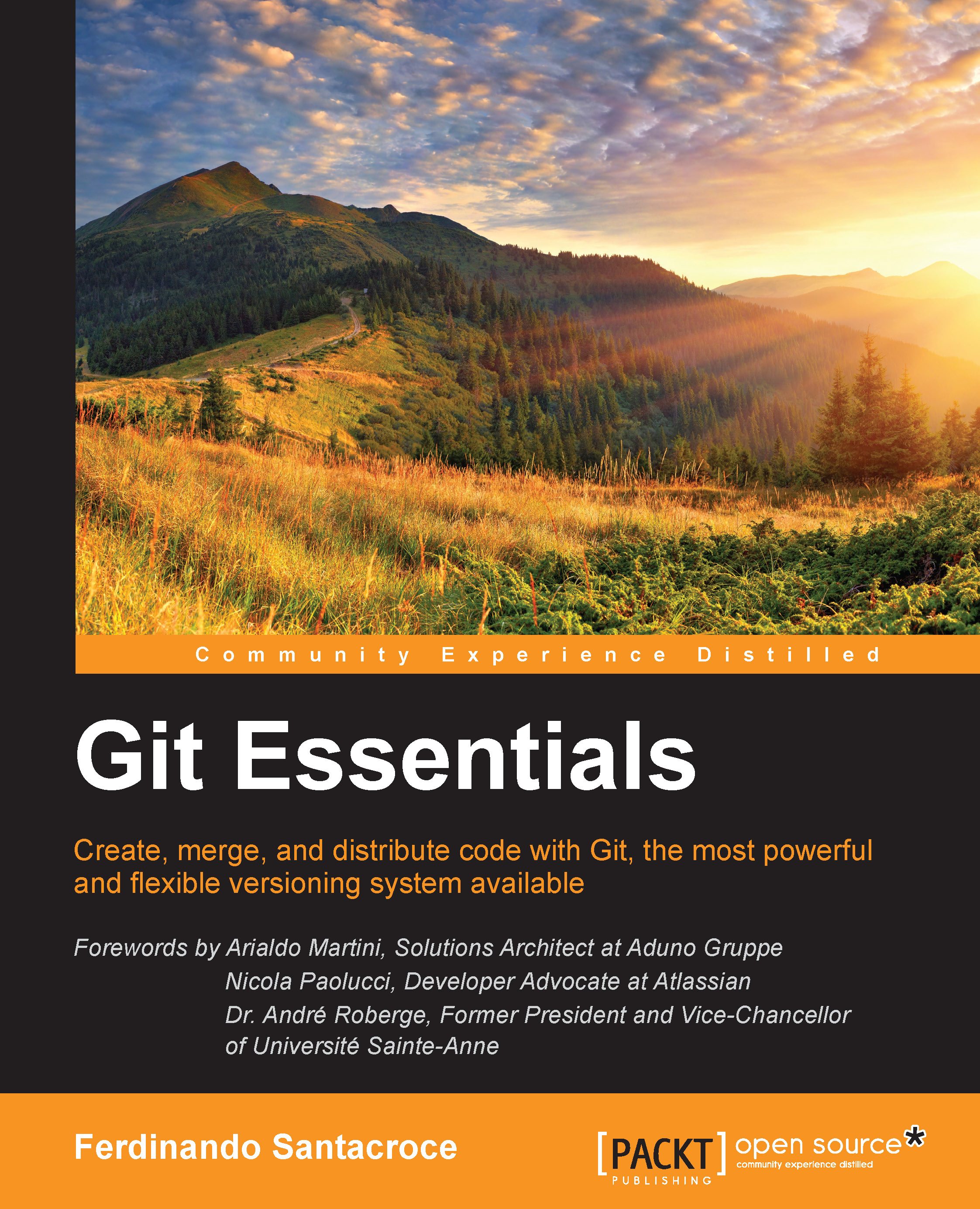-
Book Overview & Buying

-
Table Of Contents

Git Essentials
By :

Git Essentials
By:
Overview of this book
 Free Chapter
Free Chapter
 Sign In
Start Free Trial
Sign In
Start Free Trial

 Free Chapter
Free Chapter
Whether you are a professional or an amateur developer, you've likely heard about the concept of version control. You may know that adding a new feature, fixing broken ones, or stepping back to a previous condition is a daily routine.
This implies the use of a powerful tool that can help you take care of your work, allowing you to move around your project quickly and without friction.
There are many tools for this job on the market, both proprietary and open source. Usually, you will find Version Control Systems (VCS) and Distributed Version Control Systems (DVCS). Some examples of centralized tools are Concurrent Version System (CVS), Subversion (SVN), Team Foundation Server (TFS) and Perforce, while in DVCS, you can find Bazaar, Mercurial, and Git. The main difference between the two families is the constraint—in the centralized system—to have a remote server where get and put your files; if the network is down, you are in trouble. In DVCS instead, you can have or not a remote server (even more than one), but you can work offline, too. All your modifications are locally recorded so that you can sync them some other time. Today, Git is the DVCS that has gained public favor more than others, growing quickly from a niche tool to mainstream.
Git has rapidly grown as the de facto to version source code. It is the second famous child of Linus Torvalds, who, after creating the Linux kernel, forged this versioning software to keep trace of his millions lines of code.
In this first chapter, we will start at the very beginning, assuming that you do not have Git on your machine. This book is intended for developers who never used Git or used it a little bit, but who are scared to throw themselves headlong into it.
If you have never installed Git, this is your chapter. If you already have a working Git box, you can quickly read through it to check whether everything is right.


Change the font size
Change margin width
Change background colour